With the recent growth of the craft brewery industry, it's easy to forget that alcohol was actually prohibited for part of America's history. Prohibition lasted from 1920 to 1933 and during that time many breweries went out of business. But thanks to the power of the pinback,
promotional beer buttons from pre- and post-prohibition provide us with a visual history of those breweries. Here's our digital tour of the history of pre- and post-prohibition beer buttons, as presented by the
Button Museum.

Bunker Hill Brewery
The Bunker Hill Brewery was founded in 1821 by John Cooper and Thomas Gould in the Charlestown neighborhood of Boston, Massachusetts. In 1860 after the company was acquired by William Van Nostrand he began to expand the brewery's production and distribution capabilities. Later, William's son, Alonzo G. Van Nostrand, originated one or Bunker Hill's most recognized brews the "P.B. Ale"—which stands for "Purest and Best." Along with the P.B. Ale, the brewery also manufactured Boston Club Lager, Bunker Hills Lager, Old Musty Ale, Owl Musty Ale, and the Van Nostrand's Porter.
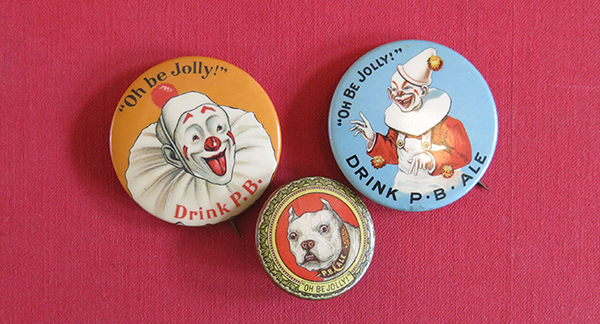
Poth Brewery
This Philly Brewery founded in 1865 gained more fame for the building that housed the brewery than the beer itself. Poth Brewery was established by Frederick August Poth and was later renamed F.A. Poth & Sons. The facility gained press for the architectural details in the structure of the building and is still a notable Philadelphia landmark today. The F.A. Poth & Sons Brewery itself barely made it to the time of prohibition and called it quits in 1920.
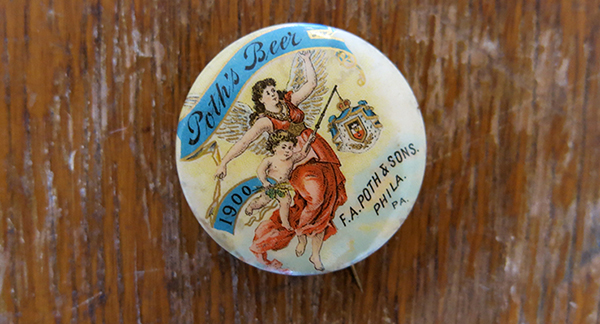
Crockery City
George W. Meredith and Joseph Turnbull founded Crockery City Brewing and Ice Company in 1899. The East Liverpool, Ohio brewery faced challenges when the first wave of prohibition hit in 1907-1911. Crockery City stayed afloat by shipping their American beers to nearby towns and counties until 1919 when the entire state of Ohio came under the law of prohibiting the sale and consumption of alcohol. The company was able to reinvent themselves as an ice plant and continued to profit making soda-pop drinks. When Prohibition fell in 1933, Crockery City Brewing began brewing beer once again.
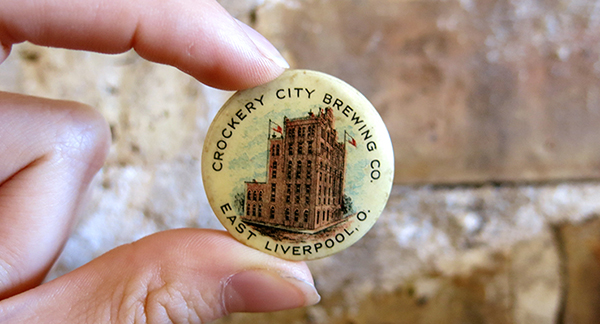
Jung Brewing
Another Ohio brewery on our list of the history of beer pins was the Western Brewery, which was founded in 1857 by Peter Weyand and Daniel Jung. After the death of both partners in 1885, it was decided to rename the Cincinnati brewery to Jung Brewing Company. The brewery operated under that name for five years.
The brewery's motto, "Sustains Life", added to the brewery's claim of being a healthy and nutritious addition to a person's diet. This was a common promotion breweries would use to counter the legislation and the Anti Saloon League that alcohol was actually harmful to the body.
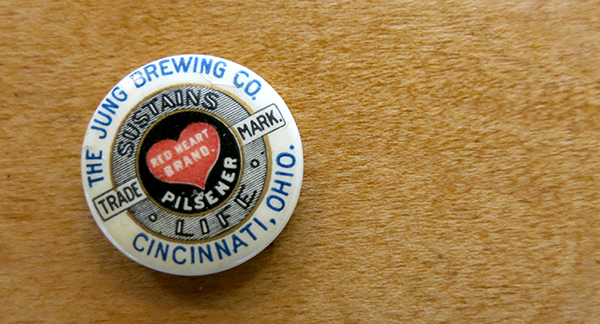
Old Dutch
Old Dutch Brewery began under the name Brilliant City Brewery in 1891 and survived Prohibition by a long shot-- the brewery remained open for a total of 75 years. In the early years of the prohibition laws, Old Dutch produced prohibition drinks like root beer, birch beer, and ginger ale. In 1923 the brewery took a ten year hiatus throughout the hardest times of Prohibition. Reopening in 1933, with another name change in 1936 to Krantz Brewing Corporation, the company eventually merged with International Breweries Inc. of Detroit in 1957.
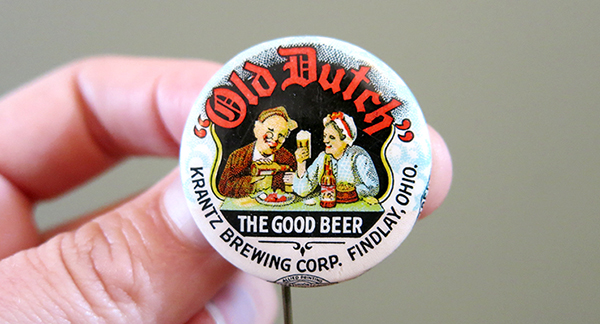
Canadian Ace
Originally the Manhattan Brewing company run by Charles Schaffner, the brewery was sold in 1919 to Johnny Torrio and Al Capone. The name was changed to Canadian Ace in 1947, to dissolve any post-war image of the brewery and refocus their marketing onto the well-established Canadian Ace brand. The brewery was still linked back to being involved in organized crime, as Lou Greenberg was a principal owner of this brewing industry. In 1968 Canadian Ace Brewery was closed down.
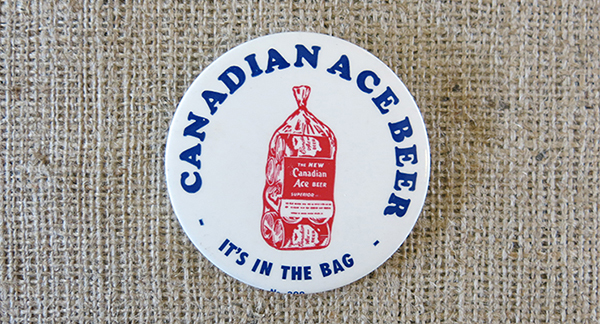
Monarch
In 1890 Monarch Brewing was founded by Josef Hladovec and soon merged with the United Breweries Company in 1898. The brewery stayed in operation throughout the Prohibition Era by brewing soda and near-beer (a low-alcohol brew), but was suspected of making alcoholic beer for the underground market. After Prohibition was repealed, they struggled to keep up with big name breweries and other American beer companies during the time of The Great Depression. In 1958, the brewery was sold to Al Capone and Lieutenant Joseph Fusco and was renamed to Van Merritt Brewing to only be shut down a few years later in 1967.
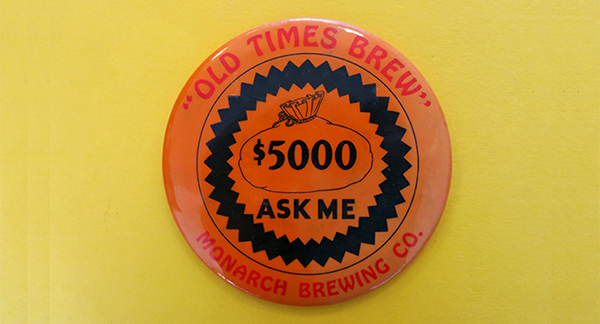
Edelweiss
Edelweiss, the very same Chicago Brewery to have created Green River Soda during the Prohibition, was started by a Prussian immigrant named Peter Schoenhofen. The company went through many hands before and after Prohibition, before finally returning to the Schoenhofen family in the early 1900s. When Prohibition laws were lifted a couple decades later, the company focused on their best-selling brew the "Edelweiss" and the brewery was renamed again to Schoenhofen-Edelweiss Co.
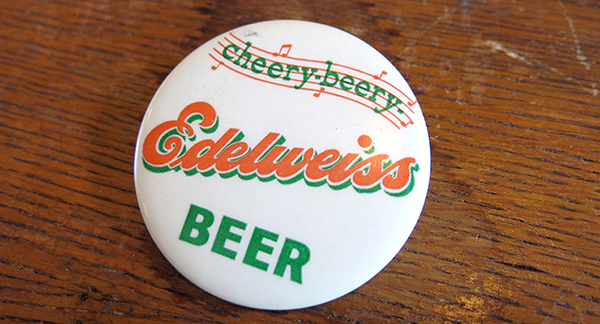
Eastside
Started under the name Los Angeles Brewery, they had their trucks loaded with beer ready to distribute at 12:01 the day Prohibition was repealed. Originally opened in 1897, the company boasted about using the water from the LA River (near where the factory was located) as an ingredient in their beer. In the height of Prohibition, the brewery was sold and renamed Eastside Brewery and grew to be one of the largest breweries in the country at the time. Eastside paid their bills by producing near-beer and soft drinks during the alcohol ban. In 1948 Eastside was purchased by Pabst, where they continued using the LA based plant until 1979.
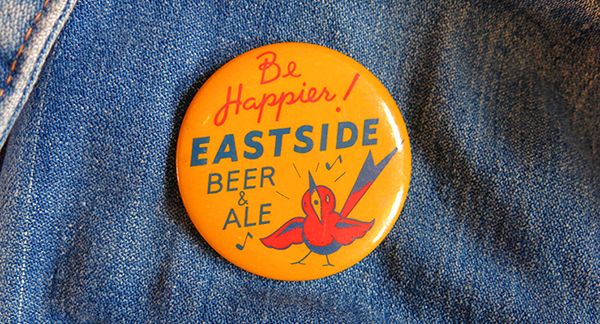
Prohibition became law under the notion that it would clean up America's obsession with alcohol and political corruption. It's made clear by reexamining these historic beer buttons that even when the laws were in place, the breweries were still operating by producing near-beer, sodas, and malts. Most breweries were able to stay in business as they waited for legislation to change, however knowing the effects of prohibition, many breweries took to secretly selling beer in the underground market. This makes these buttons that survived prohibition that much more special and valuable as a part of America's diverse and complicated past.
---
Learn more about button history in our other historical button blog posts.


